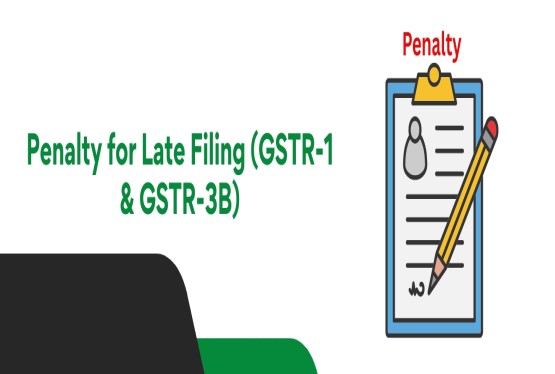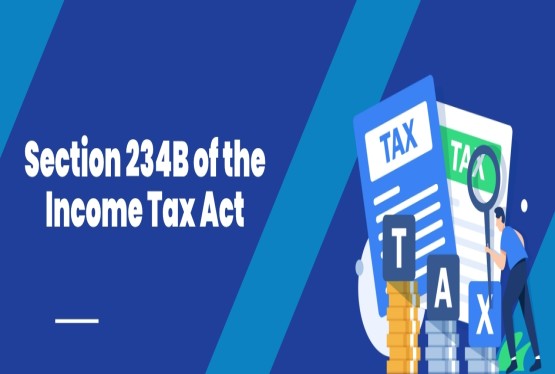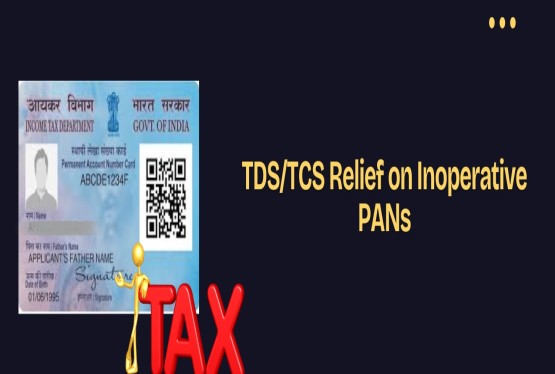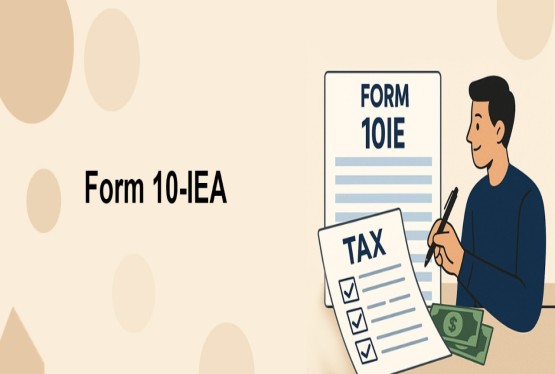In India, taxation plays an important role in nation-building by funding essential public services and infrastructure development. However, many individuals and businesses often try to reduce their tax liabilities through different means. Two terms commonly associated with this effort are "tax evasion" and "tax avoidance." Though both aim to reduce tax burdens, they differ significantly in legality, ethical considerations, and consequences. This article explains in detail the Difference Between Tax Evasion and Tax Avoidance, their characteristics, methods, consequences,egal standing under Indian law.
What is Tax Evasion?
Tax evasion is the illegal act of deliberately avoiding the payment of taxes by using fraudulent means. It involves dishonest practices like concealing income, falsifying documents, and hiding financial transactions to mislead tax authorities. It is considered a criminal offence under Indian tax laws and is punishable by fines, penalties, and even imprisonment.
Key Characteristics of Tax Evasion
Tax evasion is a direct violation of the law. It is considered a willful act of fraud where the taxpayer consciously deceives tax authorities. Individuals or entities engaging in tax evasion knowingly attempt to reduce their tax liability through illegal measures. These practices undermine the integrity of the tax system and cause loss to public revenue.
Tax evasion typically involves fraudulent reporting of income, exaggeration of expenses, and non-disclosure of assets. It reflects a clear intent to cheat the tax authorities by misrepresenting financial facts.
Common Methods of Tax Evasion
Some common methods of tax evasion include underreporting income, especially from side businesses or freelance work. Many people falsely claim business expenses for personal spending to reduce taxable income. Others submit incorrect tax returns deliberately to avoid paying taxes. Some hide their money in foreign bank accounts or deal in cash to stay out of the tax net. These actions are all done with the purpose of illegally reducing one’s tax burden.
Examples of Tax Evasion
An individual who earns significant income from freelance gigs but does not report this income on tax documents is committing tax evasion. A business owner claiming luxury travel, personal shopping, or family dinners as business expenses is another example. Hiding money in offshore accounts to avoid taxation is also tax evasion. Participating in smuggling or the underground market to skip taxes is another form of illegal evasion.
Consequences of Tax Evasion
The consequences of tax evasion are severe. It can lead to high penalties, criminal charges, and imprisonment. In addition, tax evaders may lose their professional licenses, affecting their career and business operations. It also causes reputational damage and increases future scrutiny by tax departments. Tax authorities regularly audit and investigate individuals and entities suspected of evasion.
Landmark Case Laws on Tax Evasion
In the case of Commissioner of Income Tax vs. Ramkanth Mohanlal Gandhi (1978), the Supreme Court of India held that tax evasion must involve wilful intent. Mistakes or ignorance of the law are not considered evasion unless there is evidence of deliberate fraud.
In State of Gujarat vs. Rameshchandra Ramniklal Shah (1983), the Court defined "gross negligence" as a key factor in tax evasion. The ruling established that penalties should only be applied when taxpayers deliberately disregard tax laws, protecting those who make genuine errors from harsh punishment.
What is Tax Avoidance?
Tax avoidance refers to the practice of legally reducing tax liabilities by using the provisions and benefits offered by tax laws. It involves financial planning to take advantage of exemptions, deductions, and loopholes. Though tax avoidance is legal, it is often viewed as ethically questionable, especially when used aggressively.
Characteristics of Tax Avoidance
Tax avoidance operates within the framework of the law. It is the use of legitimate means to reduce one’s tax burden. Taxpayers engage in tax avoidance by claiming deductions, investing in government-approved schemes, or shifting income lawfully.
However, while legal, tax avoidance is sometimes criticised for exploiting the intent of tax laws. Authorities may review such practices to ensure they are not used to escape tax unfairly or aggressively.
Common Methods of Tax Avoidance
Taxpayers may use various methods to avoid taxes legally. Common strategies include investing in tax-saving instruments like PPF or NPS to claim deductions under Section 80C. Claiming permissible deductions such as those for medical expenses, interest on home loans, or educational expenses is also a method of tax avoidance. Businesses may structure transactions or shift income to minimise tax burdens while staying within the law.
Examples of Tax Avoidance
An individual investing in ELSS mutual funds, PPF, or NPS to reduce taxable income is using tax avoidance. Similarly, showing home loan interest payments, children’s school fees, and health insurance premiums to claim deductions is legal tax planning. Donating to registered charitable institutions to avail tax deductions is another common example of tax avoidance.
Consequences of Tax Avoidance
While tax avoidance does not lead to legal penalties if done within legal limits, it may attract close scrutiny. Aggressive avoidance strategies might result in audits or future changes in law. The ethical debate surrounding tax avoidance has led to public criticism, especially against corporations or high-net-worth individuals who pay very little tax despite large earnings.
Landmark Case Laws on Tax Avoidance
In CIT vs. McDowell & Co. (1985), the Supreme Court ruled that tax-saving measures must serve a genuine business purpose. If a transaction has no commercial reason other than saving tax, it can be challenged. This case introduced the principle of substance over form.
In Azadi Bachao Andolan vs. Union of India (2003), the Court upheld the legality of tax avoidance as long as it is within the law. It supported the application of GAAR (General Anti-Avoidance Rule) and recognised the right of tax authorities to investigate the real purpose behind transactions.
Key Differences Between Tax Evasion and Tax Avoidance
While both tax evasion and tax avoidance aim to reduce tax payments, their nature, legality, and outcomes differ significantly. Understanding these differences is essential for responsible and lawful financial planning.
Definition and Nature
Tax evasion is an illegal act that involves fraudulent measures to escape tax obligations. It includes actions like hiding income or submitting false returns. On the other hand, tax avoidance is the legal use of tax laws to reduce liability. It involves smart planning using deductions, exemptions, or incentives.
Key Difference: Tax evasion is unlawful and deceptive, while tax avoidance is legal and strategic.
Legality and Compliance
Tax evasion violates the law and invites serious penalties, including criminal charges. Authorities investigate and penalise tax evaders. Tax avoidance, however, is lawful as long as the taxpayer follows the existing tax regulations. It requires proper documentation and compliance with the law.
Key Difference: Tax evasion is illegal and punishable, whereas tax avoidance is legal if compliant.
Intent and Ethical Considerations
Tax evasion reflects dishonest intent to cheat the government. It involves lying and hiding the truth. Tax avoidance, although legal, may raise ethical concerns when it exploits loopholes. Ethical tax planning focuses on fairness, while aggressive tax avoidance may be viewed negatively.
Key Difference: Evasion involves deceitful intent, while avoidance is a legal but sometimes ethically grey area.
Common Methods Used
Tax evasion uses illegal methods such as hiding income, overstating deductions, or using fake documents. It also includes conducting business in cash or hiding money overseas. In contrast, tax avoidance uses lawful means such as investing in tax-saving instruments, claiming allowed deductions, or structuring operations to reduce liability.
Key Difference: Evasion uses deception and fraud; avoidance uses legitimate legal provisions.
Legal Consequences
Tax evasion can result in heavy penalties, imprisonment, asset seizures, and reputational harm. It leads to prosecution under tax laws. Tax avoidance has no legal consequences if done within the framework of the law. However, authorities may audit or revise laws to prevent misuse of avoidance schemes.
Key Difference: Evasion leads to criminal and financial penalties, while avoidance has no penalties if compliant.
Regulatory Response
The government tackles tax evasion through strict laws, audits, and enforcement actions. It imposes penalties and conducts investigations to ensure compliance. Tax avoidance is addressed through regulatory measures like GAAR, which allows authorities to examine the real purpose of a transaction and take corrective action if it lacks a business objective.
Key Difference: Evasion is met with penalties and prosecution; avoidance is regulated through legal reforms and monitoring.
Example Scenarios
In tax evasion, a person deliberately underreports income or hides assets. A company may falsify records or use fake bills to show inflated expenses. In tax avoidance, a taxpayer invests in PPF, claims home loan interest, or donates to charities to reduce taxes.
Key Difference: Evasion involves lying or hiding; avoidance uses planned and legal deductions.
Comparison Table – Tax Evasion Vs. Tax Avoidance
|
Aspect |
Tax Evasion |
Tax Avoidance |
|
Definition |
Illegal act of evading taxes through fraud |
Legal method of minimising tax liability |
|
Legality |
Illegal and punishable by law |
Legal, provided it follows tax laws |
|
Intent |
Deceitful and dishonest |
Strategic planning within legal bounds |
|
Ethical Viewpoint |
Unethical and morally wrong |
Questionable but legal |
|
Regulatory Action |
Strict penalties and legal action |
Monitoring and policy changes |
|
Consequences |
Fines, imprisonment, asset confiscation |
No penalties if compliant |
Types of Tax Avoidance Strategies
There are several tax avoidance strategies that individuals and companies can use legally. Income shifting involves moving income to lower-tax jurisdictions, often used by multinational firms. Tax-deferred investments like PPF or NPS allow taxpayers to delay tax payments and save money. Transfer pricing enables companies to adjust prices within group entities to reduce tax liability. Corporate inversion involves relocating headquarters to a country with lower corporate taxes.
Legal Aspects of Tax Avoidance
While tax avoidance is lawful, authorities may tighten rules to prevent abuse. Civil consequences like penalties may apply in aggressive cases. Laws may change to close loopholes, making previously legal strategies obsolete. Ethical considerations also arise, as excessive avoidance can damage public perception and invite stricter regulation.
Managing Taxes the Right Way
Taxpayers can ensure compliance and benefit from legal deductions by following ethical tax planning practices. Investing in government-approved tax-saving schemes like PPF and NPS is one such approach. Seeking professional advice from tax experts can help avoid mistakes. Transparency and proper record-keeping are also important for safe and effective tax planning.
Conclusion
Difference Between Tax Evasion and Tax Avoidance is important for every taxpayer to know. While both aim to reduce tax liability, tax evasion is illegal and can lead to serious consequences. Tax avoidance, if done within legal boundaries, is a legitimate method of reducing tax burden. However, taxpayers should be cautious of aggressive tax planning and adhere to ethical practices. By making informed decisions, individuals and businesses can manage their taxes responsibly while contributing to the nation’s growth.
For any queries, connect with experts through:
Email: info@ccoffice.in
Call/Whatsapp: +91 9988424211
FAQs
Q1. What is the main difference between tax evasion and tax avoidance?
Ans. The main difference is that tax evasion is illegal, while tax avoidance is legal. Tax evasion involves hiding income or falsifying information to avoid paying taxes, which is a criminal offence. On the other hand, tax avoidance involves using lawful deductions, exemptions, and strategies under the law to reduce the tax burden.
Q2. Is tax avoidance punishable under Indian tax laws?
Ans. No, tax avoidance is not punishable as long as it is done within the legal framework. However, if the tax authorities find that the avoidance method is aggressive or has no real business purpose, they may investigate it under anti-avoidance rules like GAAR (General Anti-Avoidance Rule).
Q3. What are some common examples of tax evasion in India?
Ans. Examples of tax evasion include not reporting cash income, claiming fake business expenses, using false invoices, hiding assets in foreign accounts, and underreporting total revenue to show lower profits. All these acts are criminal and attract strict penalties.
Q4. How do people legally avoid paying higher taxes in India?
Ans. People use various legal ways to reduce their tax liability such as investing in tax-saving schemes like PPF or ELSS, claiming deductions under Section 80C, paying health insurance premiums, or donating to approved charities. These are allowed by Indian tax laws and help in reducing taxable income.
Q5. Can tax avoidance be considered unethical?
Ans. Yes, even though tax avoidance is legal, it is sometimes seen as ethically questionable, especially when large corporations or wealthy individuals use loopholes to pay very little tax. This can lead to public criticism and scrutiny by tax authorities, even if no laws are broken.
Q7. What are the consequences of being caught for tax evasion?
Ans. Tax evasion can lead to heavy fines, imprisonment, and asset seizure. It also damages the individual’s or company’s reputation. The Income Tax Department may also blacklist or disqualify professionals or revoke licenses if they are involved in fraudulent tax practices.
Q8. How can I plan my taxes without getting into trouble?
Ans. To manage taxes responsibly, you should consult a certified tax advisor, keep proper records, invest in government-approved savings schemes, and avoid any grey or illegal practices. Following transparent and ethical tax planning ensures you stay compliant and worry-free.








_crop10_thumb.jpg)


















































































_for_FY_2025-26_crop10_thumb.jpg)












_learn_crop10_thumb.jpg)








_Filing_Due_Dates_for_FY_2024-25_learn_crop10_thumb.jpeg)







































_of_GST_Act_learn_crop10_thumb.jpg)










_Under_GST_learn_crop10_thumb.jpg)









_crop10_thumb.jpg)


_crop10_thumb.jpg)






_learn_crop10_thumb.jpg)






















_of_the_Income_Tax_Act_learn_crop10_thumb.jpg)



_learn_crop10_thumb.jpg)






_learn_crop10_thumb.jpg)





_crop10_thumb.jpg)




















_in_The_Income_Tax_Act,_1961_learn_crop10_thumb.jpg)



_learn_crop10_thumb.jpg)



_of_the_Income_Tax_Act_learn_crop10_thumb.jpg)


_Of_Income_Tax_Act_learn_crop10_thumb.jpg)








_learn_crop10_thumb.jpg)








_learn_crop10_thumb.jpg)
_crop10_thumb.jpg)






















_learn_crop10_thumb.jpg)
_for_Import_and_Export_learn_crop10_thumb.jpg)


























